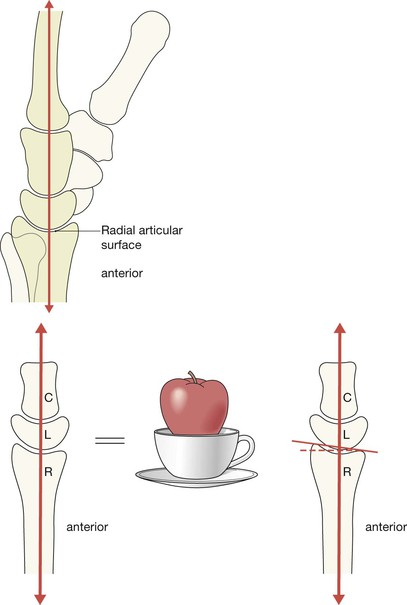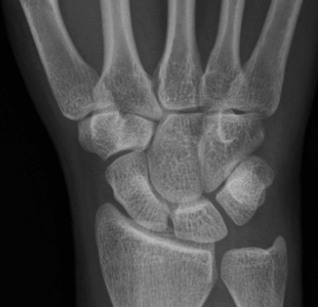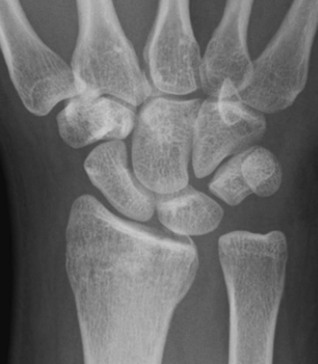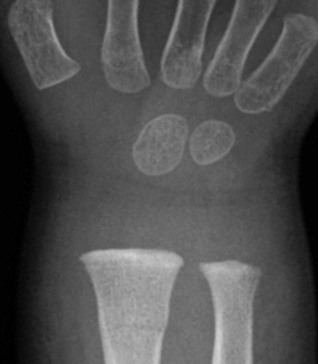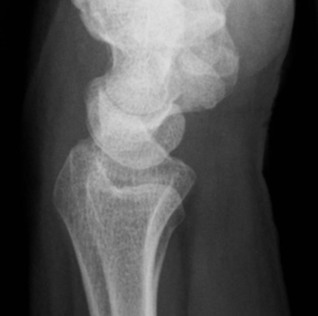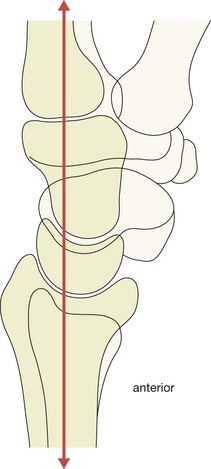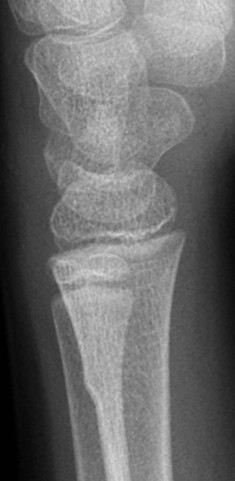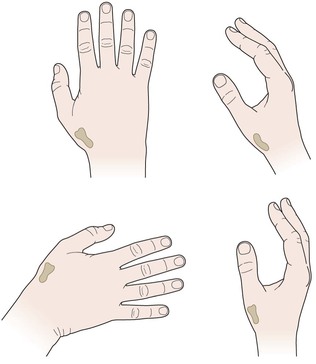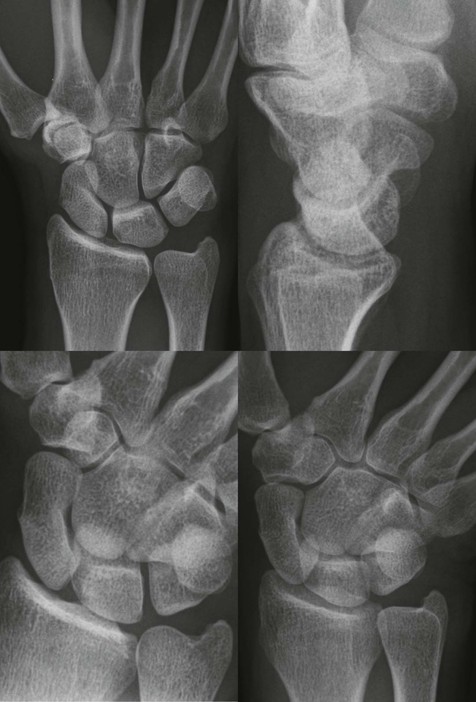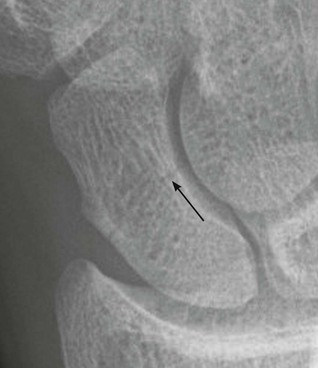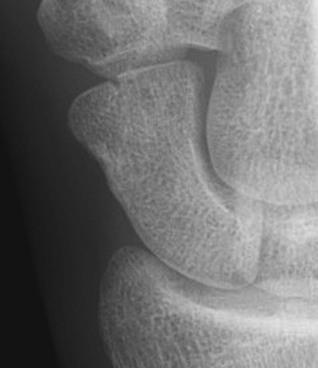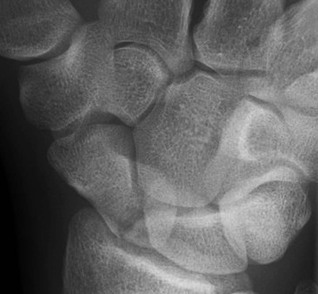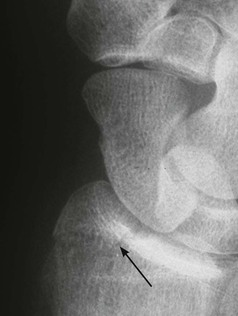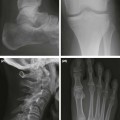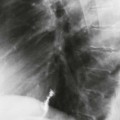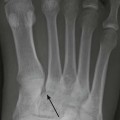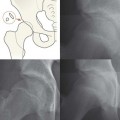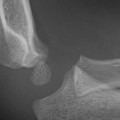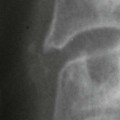The articular surface of the radius lies distal to that of the ulna in 90% of normal people. The carpal bones are arranged in two rows, bound together by strong ligaments: ▪ The joint spaces are uniform in width: 1–2 mm wide in the adult. ▪ Adjacent bones have parallel/congruous surfaces. ▪ Abnormally wide spaces are likely to indicate damaged ligaments. The dorsal cortex of the distal radius is completely smooth—no crinkles, no irregularity. This cortex should be as smooth as a baby’s bottom. The alignment of the carpal bones may appear confusing but identifying the important anatomy is actually very simple. Don’t worry about the overlapping bones. Just think: apple, cup, saucer. The PA view will appear fairly comforting to an inexperienced observer because all of the carpal bones are clearly shown. The lateral radiograph may appear terrifyingly complex and difficult to analyse because of the numerous overlapping bones. There is a very clear message: do not be afraid! The lateral view is diagnostically very, very, important, so we will show you how to quickly and confidently analyse every lateral radiograph using a simple checklist. Analysis: ask yourself five questions. Questions 1–4 apply to all adults. Question 5 applies to all children. 1. Is the radial articular surface and/or the ulna styloid process whole and intact? 2. Does the radial articular surface lie distal to the ulna? 3. Is the scaphoid bone intact and normal? 4. Is the scapho-lunate distance less than 2 mm wide? 5. In children: does the radial cortex show any angulation or any suggestion of a localised bulge?
Wrist & distal forearm
Normal anatomy
PA projection: bones and joints
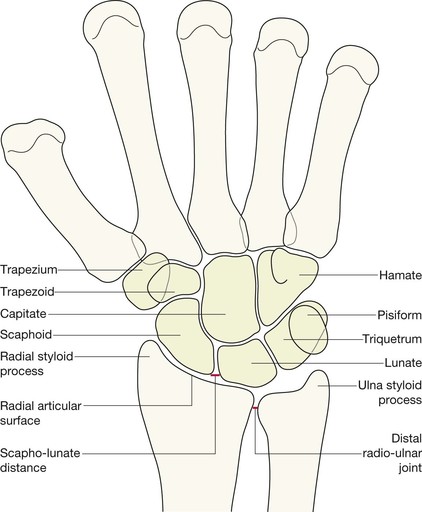
Lateral projection: bones and joints
Analysis: the checklists
The PA view
No = undisplaced fracture.
No = suspect disruption at the radio-ulnar joint.
No = fracture.
No = suspect a tear of the scapho-lunate ligaments (p. 147).
Yes = Greenstick or Torus fracture.
Wrist & distal forearm
9
